Read the full report here.
by Evelyn Ehgotz
Reflecting back on my summer as the United in Design summer intern and working on the Supportive Housing for Adults with Autism Spectrum Disorder report and complimentary design project Child Farm, what stands out the most is the importance of care. Throughout the process of research and design, it became evident that conscious empathy for the future inhabitants of these homes would be necessary. It is a reminder that empathy, care, and thoughtfulness should be driving factors in design to improve the lives and well-being of inhabitants.
Writing the report started with questions. Who is the report written for? How do we best advocate for such an underserved population? How do design rules of thumb help or hinder? And how can there be rules when there is such a range of needs even within the umbrella of Autism Spectrum Disorder (ASD)?
With these in mind, I worked with my supervisors to come up with a rough outline for the report. We built this out as I read existing resources and talked with coworkers who had worked on other supportive housing projects. The result was three primary components to the report. There was the research and compiling and summarizing existing references. There were the Case Studies, or projects worked on by Union. Then there were the recommendations, which began to synthesize the two.
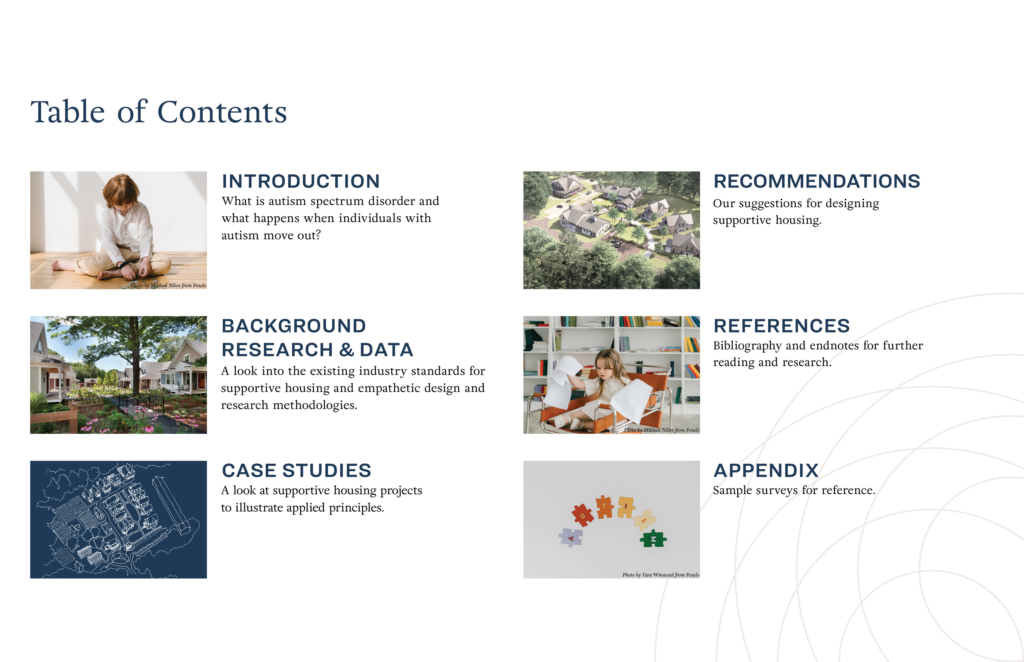
The research process began by reading and taking notes. It quickly became evident that there was not going to be a perfect guide; the spectral nature of ASD means that needs and recommendations depend on the person, and oftentimes the guidelines from different sources contradicted each other. We tried to include all these design considerations in the report and developed icons to use later as reference points in the Case Studies. Additional research into international and local precedents, design research methods, and funding streams was also compiled.
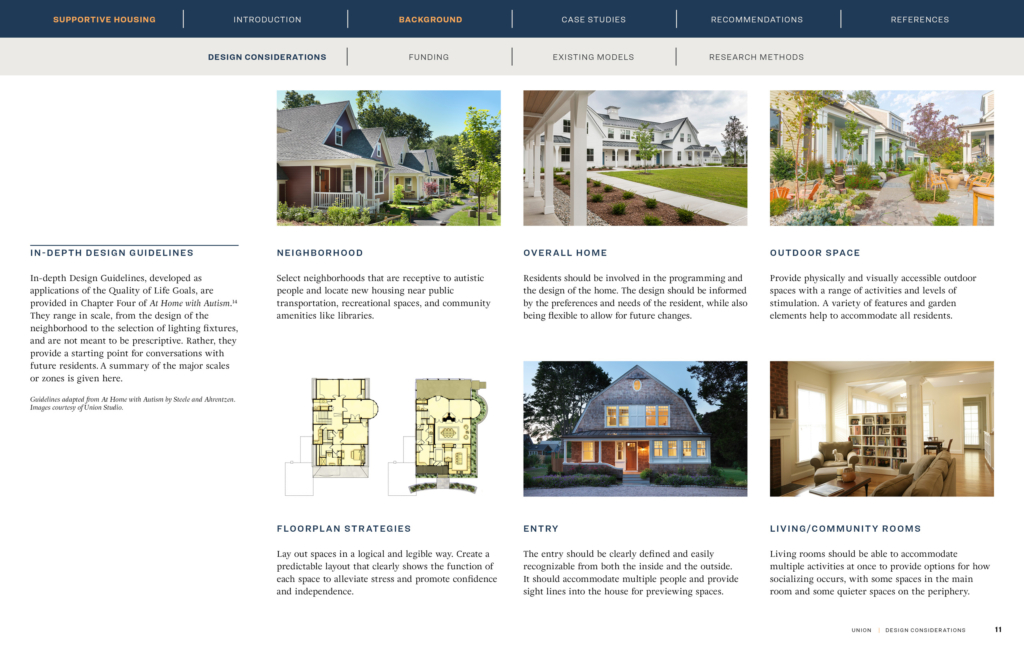
For the Case Studies, each had to be approached differently because each was at a different level of completion at the time of the report writing. Hokum Rock Home, for example, was recently completed, so we were able to include photos and drawings. We also developed and distributed a post-occupancy survey to evaluate how the project was working for the residents, staff, and visitors. On the other hand, Child Farm was still in progress. Renderings, drawings, and excerpts from a Pre-Design survey were included. For all of the projects, interactive diagrams were created to show how the different guidelines were incorporated into the site design and architecture.
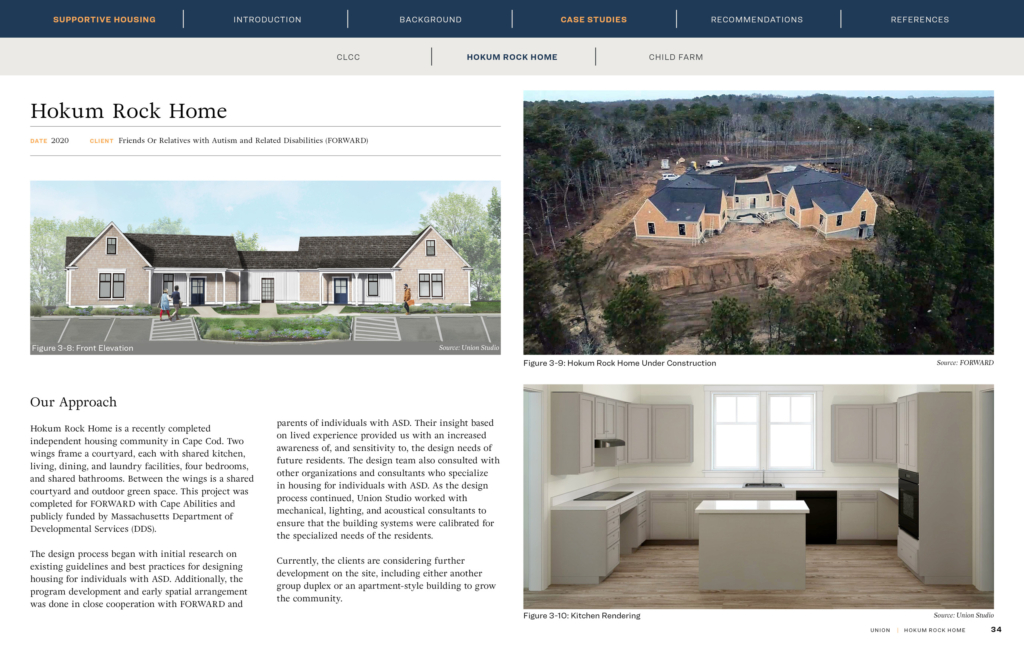
Finally, we took a step back and looked at how considerations can be applied to the design process and the different scales of design. Even though these are recommendations, they all come with a disclaimer that that there is no perfect answer. Research is changing, each individual has different needs, and needs may change over the course of their life too. The goal of the report is to be a starting point so that all involved parties, from designers to parents to developers, are on the same page to have a conversation about how to design with care.
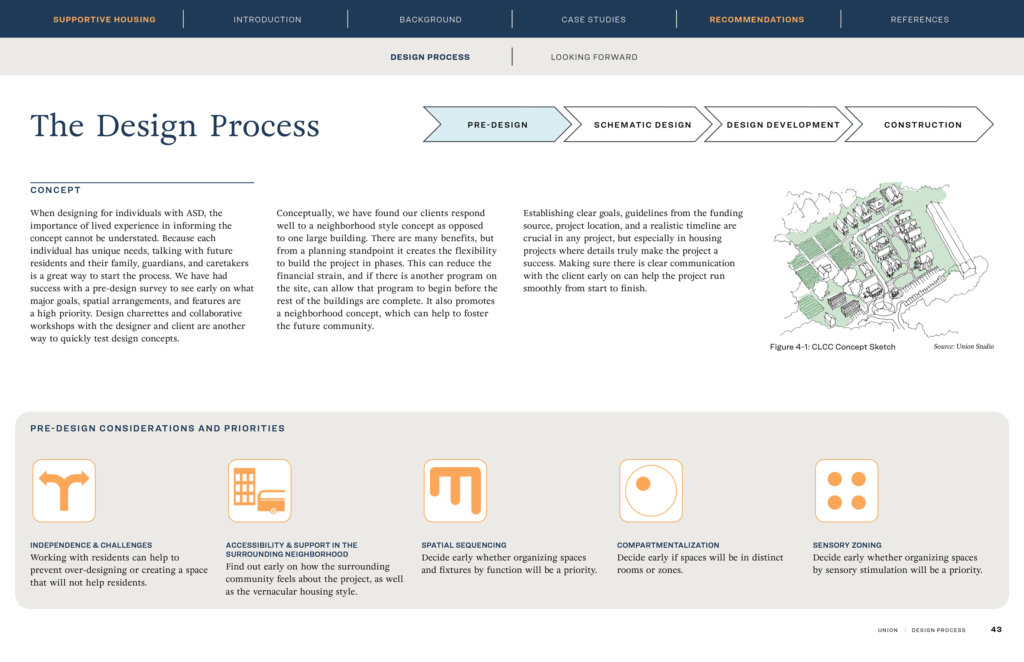
Concurrently, I became a part of the design team for Child Farm, which was in-progress and included as a Case Study in the Report. Specifically, I was tasked with working through conceptual design of cottages to be included on the campus. They became an application of the research and a way to test strategies and get feedback from the client. I was also able to sit in on client and consultant meetings, which was a great way to virtually “meet” people and learn about the other aspects of the project. Being able to work on a supportive housing project really helped to round out my experience and added a lot of soft information and understanding to the research report.
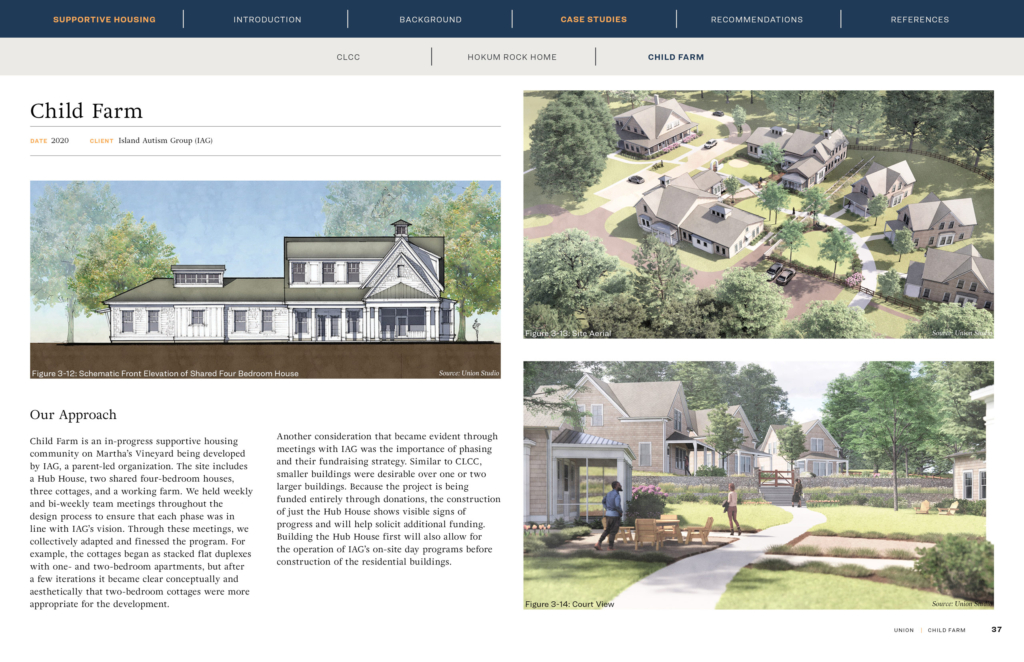
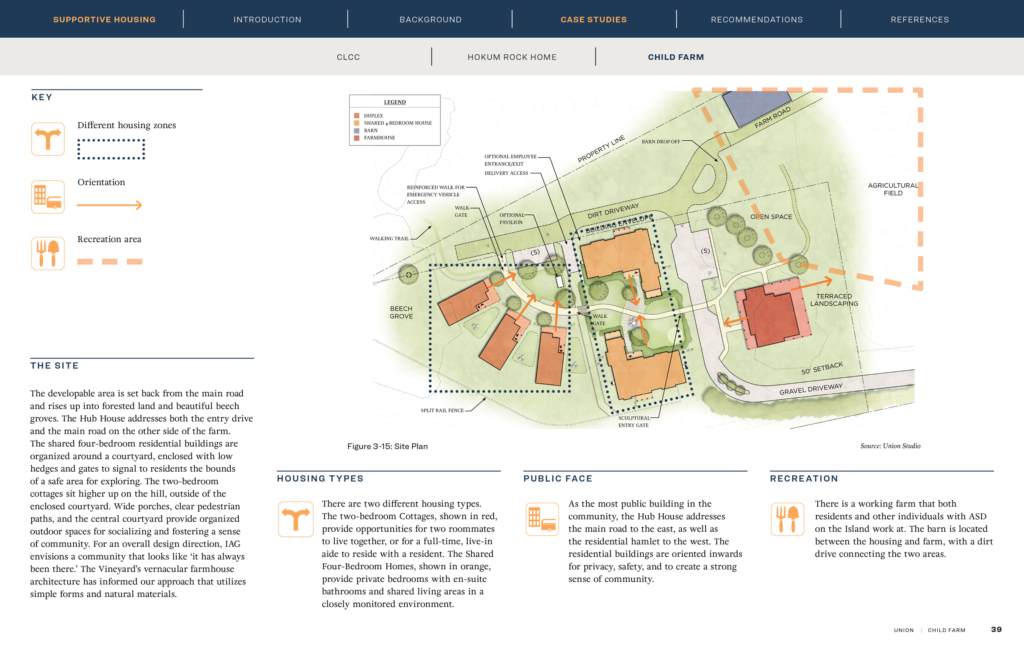
This year, I graduated from the Rhode Island School of Design and joined Union as a full-time designer. Over the summer, I participated in a few reviews and got to know this past year’s Scholarship recipient, Grace, and saw her present a wonderful report on Equity in Sustainability. I am also working on the website rebrand and a handful of housing projects that I am very excited about. I am grateful to have rejoined the team and can’t wait to see how these reports evolve over the years and continue to be implemented!
